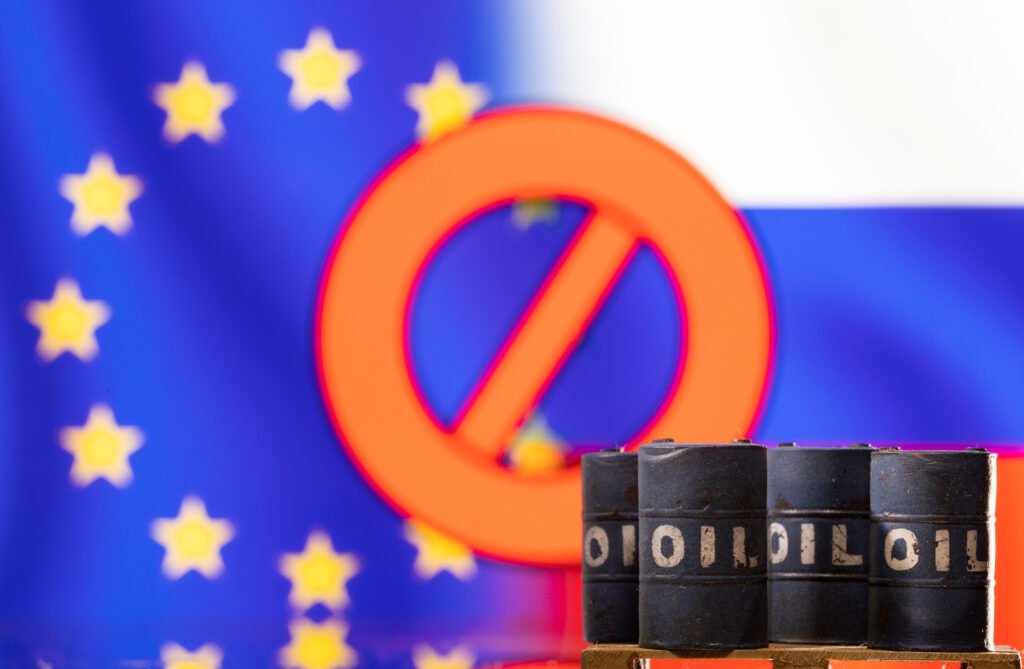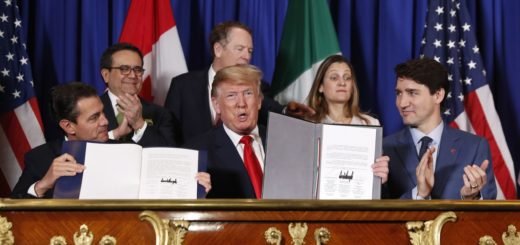Understanding the Oil Price Cap: Reasons, Political and Economic Effects and Challenges

Introduction
In the context of international relations, an oil price cap refers to a policy implemented by a government or international organization to regulate the price of oil on the global market. The goal of an oil price cap in international relations is to stabilize oil prices and prevent them from becoming too high or too low, which can have a significant impact on global economies and international relations.
One of the main reasons for implementing an oil price cap in international relations is to mitigate the economic and political effects of fluctuating oil prices. High oil prices can lead to inflation, slow economic growth, and increased poverty, especially in countries that are heavily dependent on imported oil. Conversely, low oil prices can negatively affect oil-producing countries by reducing their revenues and destabilizing their economies.
There have been various attempts to establish an oil price cap in international relations throughout history.
There are several reasons for implementing an oil price cap:
- Protection of Consumers: One of the primary reasons for implementing an oil price cap is to protect consumers from high oil prices. High oil prices can lead to inflation, slow economic growth, and increased poverty, especially in countries that are heavily dependent on imported oil. By capping oil prices, governments aim to ensure that consumers do not have to bear the full burden of changes in global oil prices.
- Stabilization of global economy: Fluctuations in oil prices can have a significant impact on global economies and international relations. High oil prices can lead to inflation and slow economic growth, while low oil prices can negatively affect oil-producing countries by reducing their revenues and destabilizing their economies. Implementing an oil price cap aims to stabilize oil prices and prevent them from becoming too high or too low.
- Mitigating Economic and Political Effects: The effects of oil prices are not limited to the economy but also affect politics, international relations, and social stability. High oil prices can lead to social unrest and political instability, particularly in countries that are heavily dependent on imported oil. Implementing an oil price cap can help to mitigate these effects by stabilizing prices and protecting consumers from high prices.
- National security: Some countries might implement oil price cap to secure their national energy supply and reduce their dependence on foreign oil.
- International cooperation: Countries can come together to agree on a price band, a range in which the price of oil should fluctuate, and if the price breaches that range, the member nations would work together to control the prices.
- Reducing Inflation: High oil prices can contribute to inflation, and capping prices can help to reduce inflation.
It is important to note that the implementation of the oil price cap is not universally supported. There are arguments against it, such as it distorts market mechanisms, reduces competition and can lead to shortages.
Economic and Political Effects
The economic and political effects of an oil price cap can be both positive and negative.
Economic effects:
- Positive:
- Protection of consumers from high oil prices: An oil price cap can help to protect consumers from the negative effects of high oil prices, such as inflation, slow economic growth, and increased poverty.
- Stabilization of the global economy: Implementing an oil price cap can help stabilize oil prices and prevent them from becoming too high or too low, which can positively impact global economies and international relations.
- Reducing Inflation: Capping prices can help to reduce inflation.
- Negative:
- Reduced competition: An oil price cap can limit competition among oil producers and reduce incentives to explore and develop new oil reserves.
- Limited supply: Companies may have less incentive to produce oil if they cannot charge higher prices, leading to shortages in supply.
- Reduced investment in the industry: With a price cap, there may be less profit potential for companies, which could lead to reduced investment in the industry.
- Inefficiency: It distorts market mechanisms and can lead to inefficiency in the market as well as push companies to find ways to circumvent the caps.
Political effects:
- Positive:
- Reduced social unrest: High oil prices can lead to social unrest, particularly in countries that are heavily dependent on imported oil. Implementing an oil price cap can help to mitigate these effects by stabilizing prices and protecting consumers from high prices.
- Improved relations with other countries: Implementing an oil price cap can improve relations with other countries by reducing the likelihood of economic and political disputes over oil prices.
- Negative:
- Reduced government revenue: Governments can reduce their revenue through oil price cap as it reduces the amount they can collect through taxes and royalties.
- Reduced independence for oil-producing countries: An oil price cap can limit the ability of oil-producing countries to set their own prices and maintain their own economies.
- Social unrest in oil-producing countries: Low oil prices can lead to instability in oil-producing countries and social unrest.
It is worth noting that the effects of oil price caps vary from country to country, depending on their specific economic and political circumstances. It’s also worth mentioning that an oil price cap might not always be a solution and other solutions may be required.

The challenges of implementing an oil price cap
Implementing an oil price cap can be a complex and challenging task for a number of reasons. One of the main challenges is determining an appropriate level for the price cap. Setting the cap too low could discourage investment in oil production and refining, leading to shortages and higher prices in the long run. On the other hand, setting the cap too high could fail to provide relief to consumers and businesses that are struggling with high energy costs.
Another challenge is finding a way to enforce the price cap. One option is to use government regulations to control prices, but this can be difficult to implement and enforce, and can also create opportunities for corruption. Another option is to use market mechanisms, such as futures contracts, to control prices, but this can be complex and may not be effective in controlling prices in the short term.
Additionally, there are political challenges as well. For example, oil-producing countries may resist any attempts to limit prices, as it could negatively impact their economies. Similarly, powerful oil companies may push back against price caps, as they could reduce their profits.
There’s also the risk that price caps might not be successful in achieving their intended goal, for example, it might be possible for traders, speculators, and middlemen to find ways to bypass the price cap and continue charging high prices.
Also, there could be unintended consequences of implementing a price cap. For example, it could lead to shortages or black markets for oil, as suppliers may not be able to sell their products at the capped price. It could also lead to inefficiencies and market distortions, as suppliers may have less incentive to invest in new technologies or to find ways to reduce costs.
Therefore, implementing an oil price cap is a complex task that requires careful consideration of a wide range of factors.
Case Study – G7 Oil Price Cap on Russia
The Group of Seven nations, Australia and the 27 European Union countries imposed on December 5 a price cap on Russian crude oil transported by ships, aiming to reduce Moscow’s ability to finance its war in Ukraine and preserve stability on the global oil market.
The price cap comes on top of an EU embargo on buying seaborne Russian crude oil as a measure aimed mainly at providing third-party countries with an option to still buy it if the transaction is at or below the price cap level.
The level will be reviewed every two months, starting in mid-January, to make sure it stays at least 5% below the average price for Russian crude as determined by the International Energy Agency. Each change in the cap will be unanimously agreed upon by all 27 countries of the European Union and then by the G7.
After each change of the cap, there will be a 90-day grace period to make sure no ship is caught at sea with cargo at a price that is no longer valid.
G7 and European Union insurance and reinsurance companies that provide services for tankers carrying Russian crude oil, as well as institutions financing Russian crude transactions, will not be allowed to handle such cargo unless the oil is bought at or below the price cap.
Shipping companies will not be allowed to provide tankers for transporting Russian crude unless the oil is sold at or below the $60 price cap.
Providing financial and shipping services for Russian crude oil is allowed if it is bought at or below the price cap as well as in an emergency. Specific projects which are essential for the energy security of certain third-party countries may be exempted from the price cap.
If a third-party country-flagged vessel intentionally carries Russian oil above the price cap, EU operators will be prohibited from insuring, financing and servicing this vessel for 90 days after the cargo has been unloaded.
EU-flagged vessels will be subject to penalties according to national legislation, but the EU is already working on a penalty of 5% of global turnover for companies that break EU sanctions.
India on G7 oil price cap on Russia
India is buying Russian oil and even looking for term contracts as the terms of the sanctions allow purchases provided that Western services are not used.
Indian officials have defended buying oil from Russia, saying its lower price benefits India.
Since the Russian invasion of Ukraine, India has steadily increased its purchases of discounted Russian oil. Those imports hit a record high in October, and Russia became India’s top oil supplier in terms of barrels per day.
However, India’s import from Russia is far less than EU countries.


















